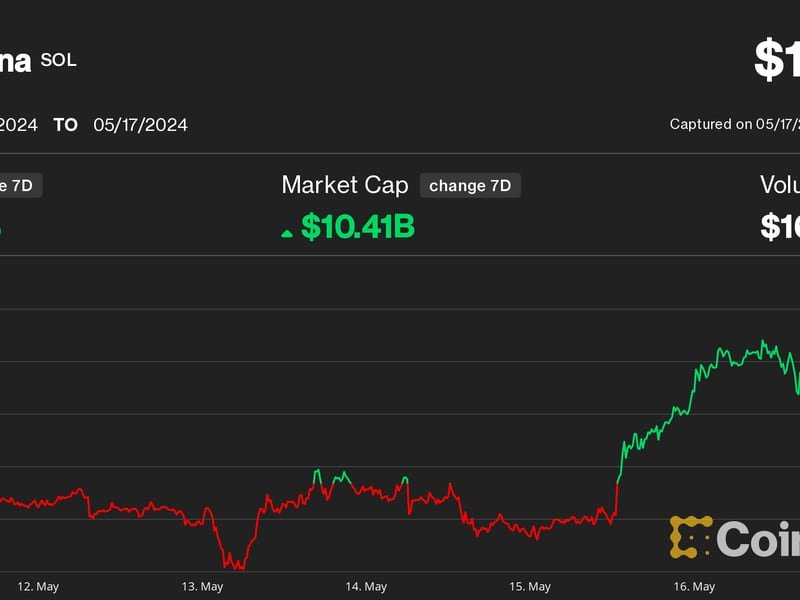Solana’s SOL Could Hit $200 By Month End, Hedge Fund Founder Says
OEIS Financial Fraud Private Investigator:
Solana’s SOL hit its highest price in a month Friday outperforming most crypto majors.
The token is “still the best trade this cycle,” and could reach $200 by the end of May, Syncracy Capital co-founder said.
Solana’s native token (SOL) has been leading the recent rebound in cryptocurrency prices, outperforming most digital asset majors, and could soon target new cycle highs.
SOL hit $170 on Friday, its highest price in more than a month, before slightly retreating to $166 recently. It has advanced nearly 7% over the past 24 hours and is now up more than 40% from the crypto market’s local bottom in early May, while BTC sank to $56,000.
On the weekly timeframe, solana’s 17% gain was the most among the members of the broader crypto market benchmark CoinDesk 20 Index (CD20), only behind Chainlink’s (LINK) benefitting from news of a fund tokenization pilot partnership.
“Strength on SOL has been incredible on this bounce,” Daniel Choung, co-founder of digital asset hedge fund Syncracy Capital, said in an X post. “Very clear this is still the best trade of this cycle.”
Choung said he’s increasingly “confident” that SOL could retake the $200 level by the end of the month and target new record highs “soon.”
SOL reached its $260 all-time high in November 2021 at the peak of the previous bull cycle.
Solana is benefitting from multiple catalysts, including bustling meme coin trading, strong stablecoin volumes and decentralized finance (DeFi) activity.
Choung cited incoming network upgrades are paving the way for the highly anticipated Firedancer, a secondary chain client developed by Jump Crypto that aims to improve the network’s performance.
There’s also an “increasingly growing interest in shared cryptoeconomic security” – usually referred to as restaking – arriving to the ecosystem, David Shuttleworth, research partner at Anagram, said in an X direct message.
Edited by Aoyon Ashraf.





